Swimming 101: How to Make the Most Out of Your Taper
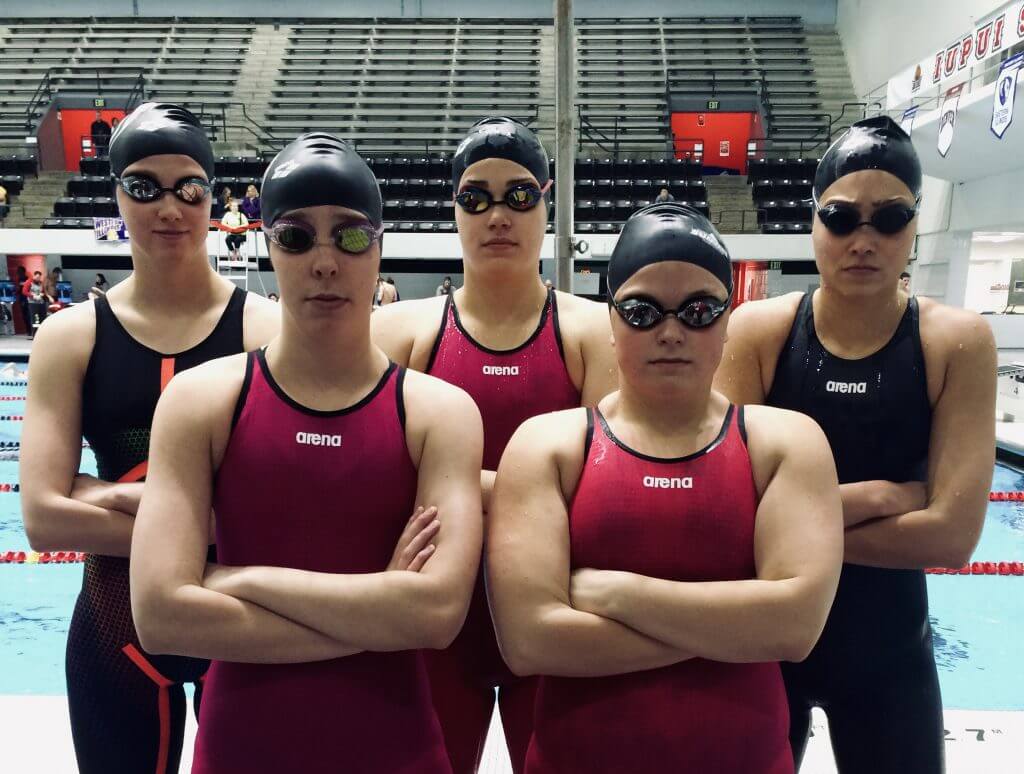
By Isabelle Robuck, Swimming World College Intern.
Without further ado, it’s time to welcome the greatest time of year for every college swimmer out there – it’s taper time! That’s right, time for all of our hard work to pay off and the blood, sweat and tears to become worth it. At this point, there’s nothing standing between us and the best swim of our lives except the water… Well, and taper.
That said, we have a lot on the line right now. We didn’t train all year for nothing, right? To make most of taper’s benefits, it’s important to know what exactly taper entails. It’s also crucial that as yardage decreases, we keep our habits outside of the water in top condition, too. “Look good, feel good, do good,” right?
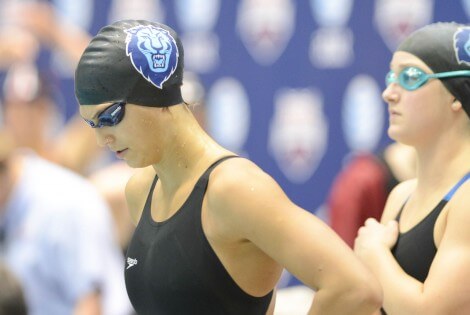
Photo Courtesy: Tia Patron/Tennessee Athletics
Taper is essentially trusting in a whole bunch of different processes that make up swimming. Trusting that your coaches have trained you to the best of their ability, trusting that you pushed as hard as you could every day in practice, and most importantly, trusting and believing in yourself enough to do amazing things in the water without the fear of failure. With all of those key components, theoretically you’re going to put together one great swim. But that’s just it – in order to become successful, we must create success both in and out of the water. In this case, it’s through taper.
So, how do we reap the full benefits of taper?
First and foremost, it’s important that you know how your body takes to taper. Most seasoned swimmers have a fair idea of what taper works best for them, but it takes time to figure it out if you aren’t quite sure. The overall goal of taper is the maximize your skills in the water, fine tune technique, gain speed and strength, all while allowing your body to recover from the hard work. Let’s break it down further.
Here’s how to maximize your skills in the water.
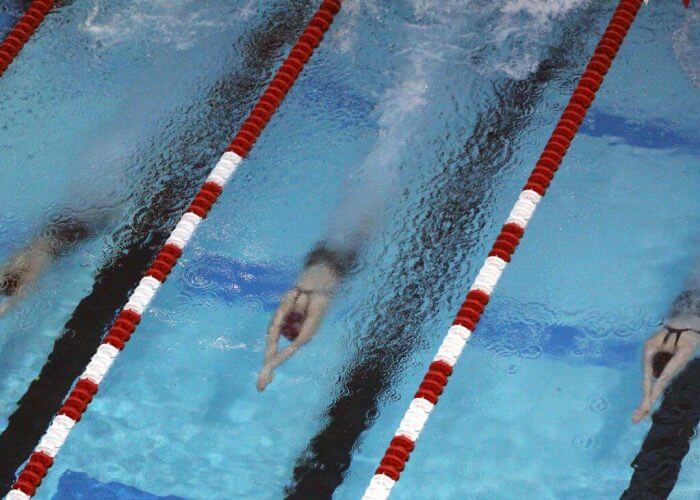
Photo Courtesy: CHSAA
It’s obvious that everyone is good at different things: fast turns, powerful underwater kicking, and quick reactions are just a few deadly weapons we can use to our advantage. That said, it’s important to make the most of our strong suits. During taper, focus on your strengths, not your weaknesses. Next, implement your skill sets into your racing strategy. If you have killer under waters, put energy into making them your strongest superpower!
Here’s how to fine-tune your technique.
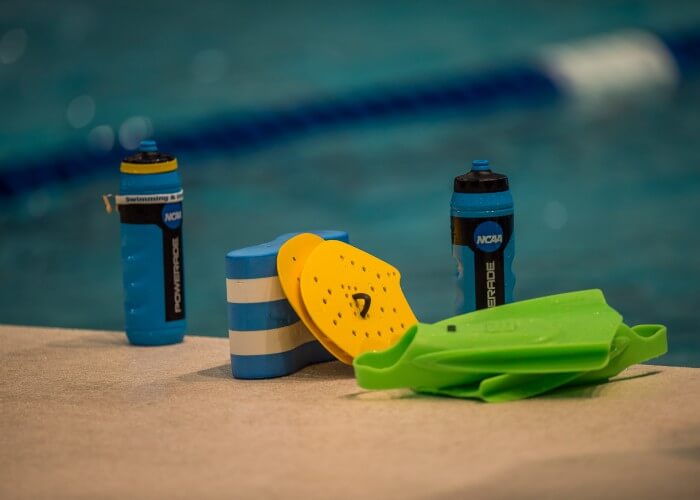
Photo Courtesy: Peter H. Bick
As the yardage drops, time is of the essence! Spend time perfecting your technique. Having a good feel for movement is a huge part of taper, so be sure to do whatever it takes to find the water. This can include sculling, assistance/resistance work with parachutes and power towers, and drill focus. At this point, there are no corrections to be made: changing up technique now can hinder your ability to swim well, as it’s different from how you’ve been training. Make a mental note of things to work on for next season, but for now, focus on what’s in front of you and refine it.
Here’s how to gain speed and strength.
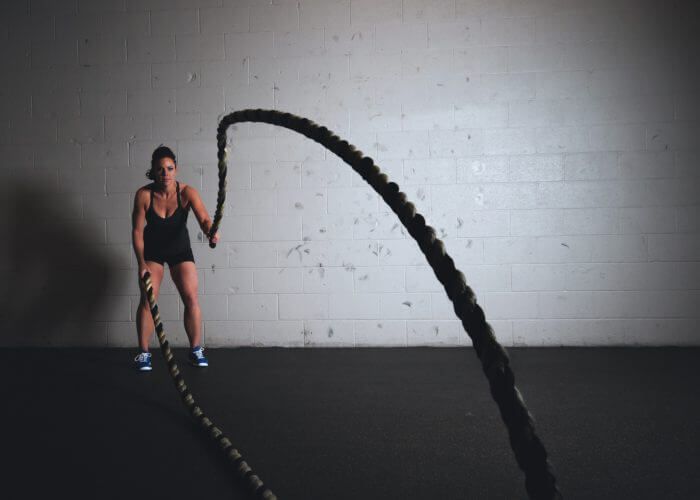
Photo Courtesy: Scott Webb
This component of swimming is very individualized and comes with experience. Everyone knows what’s best for them when it comes to finding that perfect balance of strength and power. Generally, our goal in swimming is to gain as much speed to go best times and break records. Throughout your season, you’ve worked hard to achieve just that. Sure, it didn’t always show during in-season meets; this comes from being tired, which has benefits within itself. Learning how to swim tired comes into play during taper. If you can learn how to push through hard sets and tough races with dwindling energy, swimming the same race again but with taper’s fierce fire and passion behind you can take you to places you didn’t know you were capable of!
Strength, on the other hand, is pretty open ended and is comprised of many different environments and skill sets. From weight room training to dryland and yoga, strength is important because it helps increase muscle mobility, which limits chances of injury. Not to mention, flexibility is something most swimmers lack, so working throughout season to improve mobility and muscle flexibility allows us to safely push ourselves even harder. Moreover, strength builds into power, which also does wonders for us in the water.
Here’s how to recover properly.
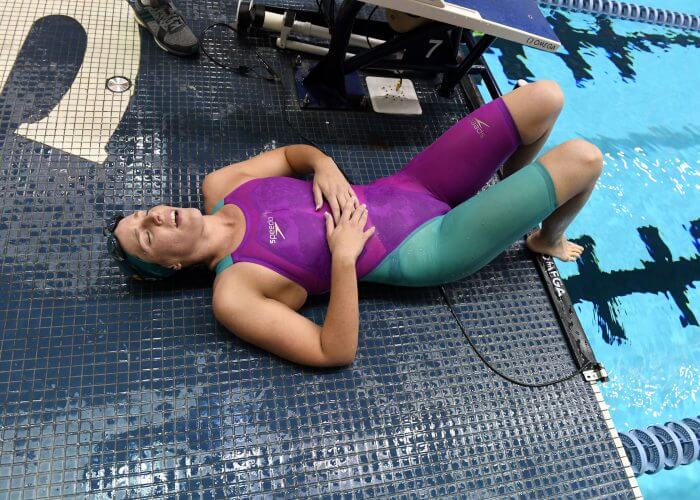
Photo Courtesy: Delly Carr / Swimming Australia Ltd.
Recovery can be one of the most important parts of swimming. What we do outside of the water can directly affect how we perform in the water. While most younger swimmers don’t really have to take recovery as seriously, recovery can actually save your body during any tough set, practice or meet. So, how do we recover properly?
First, drink water and lots of it. It’s pretty much self-explanatory; we all know to drink water, but try to pay attention to how much water you are actually drinking. Statistically speaking, athletes should drink around eight ounces of water every 15 to 30 minutes while working out. Check out this in-depth article on the specific hydration needs of swimmers.
Next, eat right or eat better – but no matter what, do not change your diet right before your big meet. Knowing how nutritious foods nourish our bodies can keep us going when times are hard, but if you’ve eaten a candy bar before every swim meet for the past seven years, don’t switch it up now. It can mess with you not only physically but also mentally. To get started, here’s an article that gives a list of great, nutritious eats and tips. Give it a look!
Last, one of the greatest parts of recovery is rest. Because practices get shorter and become less demanding, chances are you’re going to have more energy. Sometimes, it can be a little hard to contain. When you’re so used to running on low fuel, a small bout of energy can almost feel foreign! The older we get, the more we learn how to serve our bodies better. Instead of running around the house like a young puppy, we learn to maintain our energy; conserve it until it can be useful, which in this case means our taper. Besides, the break is much needed, so take advantage of it while you can!
Shaving… Good or Bad?
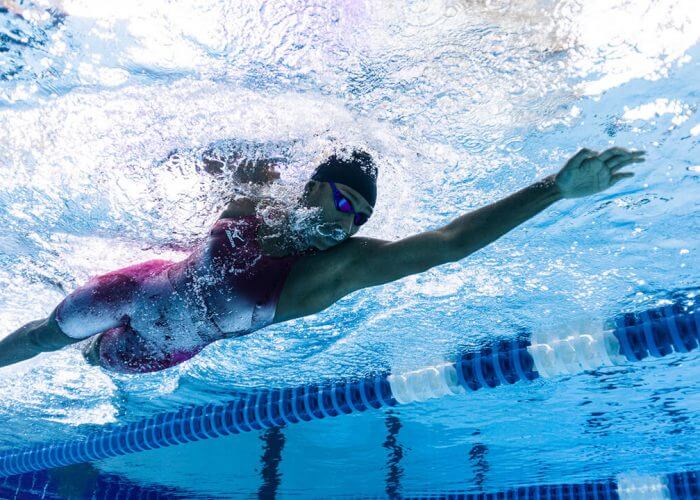
Photo Courtesy: Mizuno USA
Now, let’s talk about shaving. Swimming is probably the one of the only sports that almost does the opposite of what society tells us when it comes to shaving. Some people swear by the act of shaving during taper, but others don’t live by the hype. So, what does shaving do exactly?
Shaving essentially changes your feel for the water – it’s kind of like the icing on the taper cake. So, along with physically moving better and more efficiently in the pool, shaving can create an environment where the water practically glides right off of your body for an almost exhilarating feeling. It’s all part of the “look good, feel good, do good” mentality. Truthfully, shaving for your meet really comes down to whether or not you agree with its powers. Take a look at this article for an in depth understanding of shaving and it’s possible benefits.
When it comes down to it, taper is made up of several parts mentality and mindset on top of the physical training. While it is true that all of the outside factors can influence your outcome, it’s fair to say that the real determining factor of how you’ll perform comes from your willingness and determination to put everything on the line for one swim at a time and one swim only. You ultimately decide how much you trust in the process. You’re the one putting in the effort. Know that you’ve worked hard for this moment, you deserve it and it’s time to show what you’re made of. After all, hard work beats talent when talent doesn’t work hard.
-All commentaries are the opinion of the author and do not necessarily reflect the views of Swimming World Magazine nor its staff.




OMG Fleur this is like gold dust for you!! Xxxxx
Michelle Matson brilliant read!!!! Thanks mate xxxxx
Callum Gannon
Jennifer Ann Raiffeisen Monroe
Tay Thomas
Parker Soik
Savannah Brennan???
Mackenzie Menuchak
Make sure your properly tapered, and don’t end up being overly tired before a big meet because you’ve been over trained.